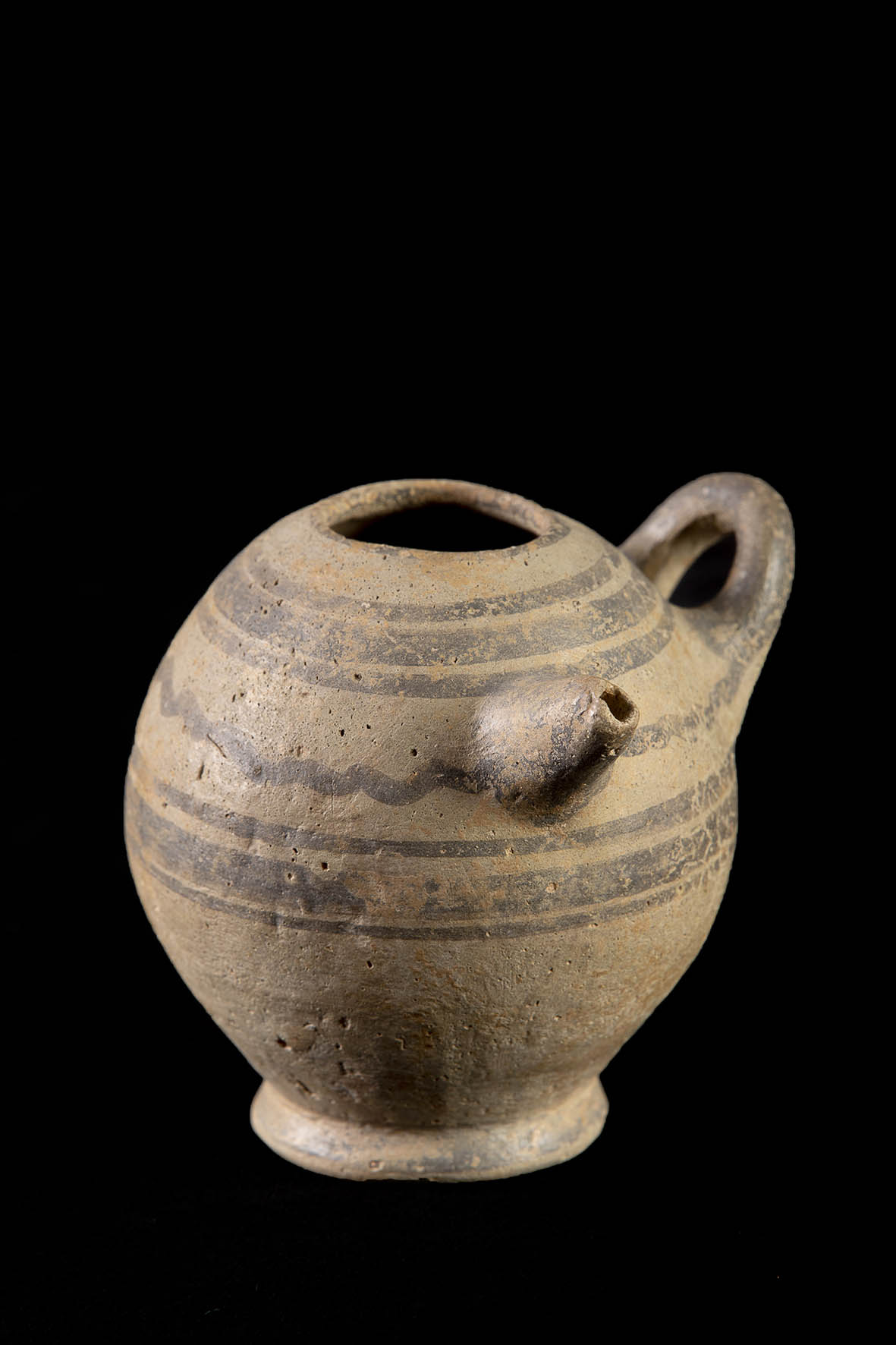- Object type
- askos
- Production date
- -599 / -475
- Fabric
- fine Ionian pottery
- Culture
- Colonisations
- Discovery location
- Empúries
- Materials
- pottery
- Township
- Escala, l' (Europa, Espanya, Catalunya, Girona, Alt Empordà)
- Technique
- moulding
- Where is it?
- MASPG
- Dimensions
- 114 x 210 x 860 mm






